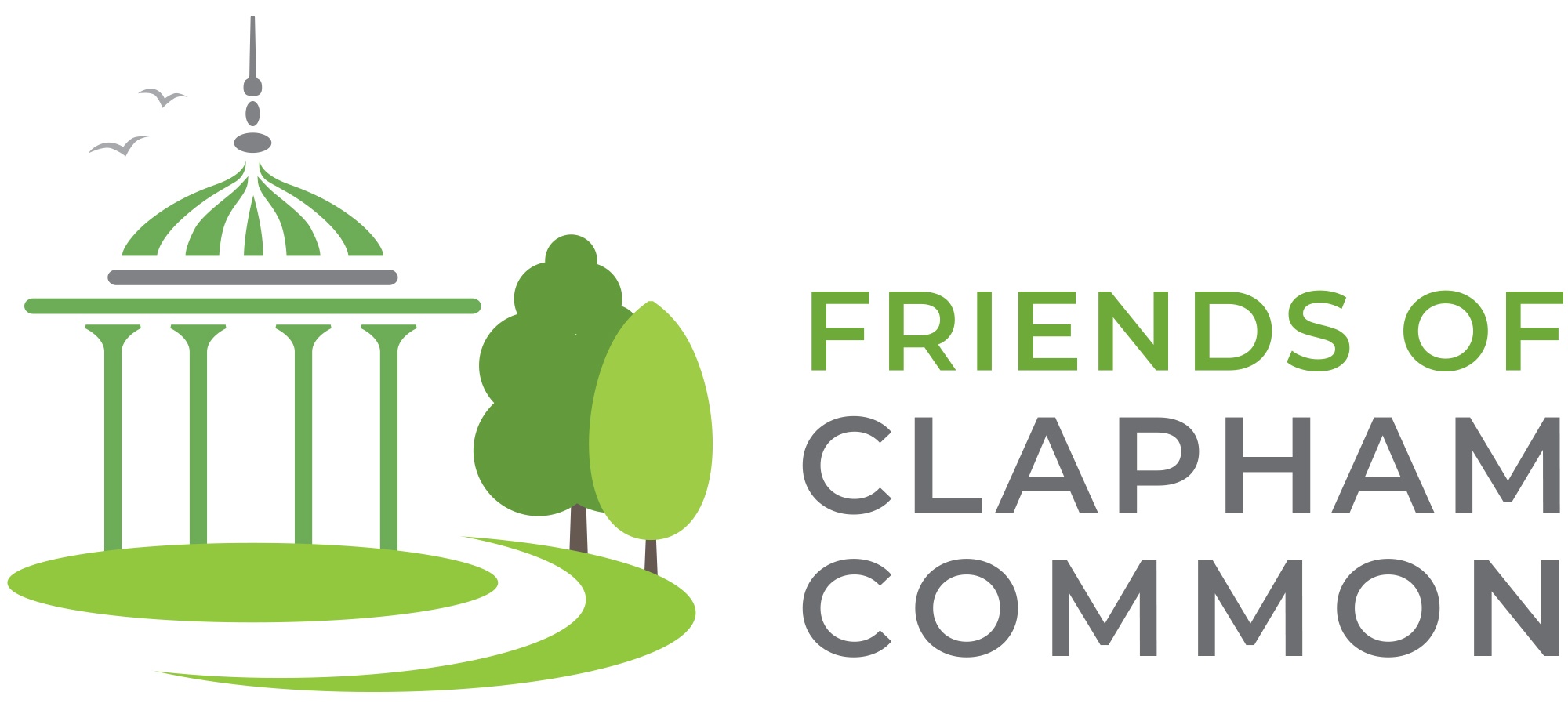About The Common
What is The Common
The Common has existed for nearly 1,000 years, but the pressures on its character today are immense.
It has some 2,500 trees and two small areas of woodland. The trees perform a number of important functions such as absorbing carbon dioxide and traffic exhaust particulates, and dampening traffic noise. They also play a role in buffering extremes of temperature and provide important habitats for birds, bats and insects.
Many of the large trees on the Common were planted before 1895, mainly in avenues, and now exist as stately specimens of London Plane and Lime (Linden). Later plantings have sought to connect areas of woodland and promote small clumps.
Clapham Common is managed by the London Borough of Lambeth, although its ownership is split between Lambeth and Wandsworth. Its status is protected by an Act of Parliament and is recorded by the Council as a Conservation Area and a ‘Grade II Site of Importance for Nature Conservation (SINC)’.
The Friends of Clapham Common are working actively with the community to enhance the beauty and character of the Common for the lasting benefit of all. Since 2008 we have planted over 350 trees.
Large Open Spaces
Clapham Common is one of the largest open spaces (89 hectares) in South London and performs an essential role as a green lung and a place of recreation.
Trees on the Common
There are about 30 species of trees, including:
London Plane, Black Alder, Crab apple, Hazel, Willow, Horse Chestnut, Large-leaved Lime (or Linden), Sweet Chestnut, Hornbeam, Ash, Elm, Oak, Acacia.
Recent additions to the fringe include Lebanese cedars and Lambeth’s only giant redwood (sequoia).
The most common is the London Plane: a hybrid of American and Spanish Plane, planted along the avenues in the late 19th century as they are tolerant of pollution and root compaction. It grows up to 35m tall.
In collaboration with Trees for Cities, FCC has created a ‘community orchard’ on the West side, containing fruit trees of local (Surrey) provenance: apples, crab apples, pears, cherries, mulberries, quinces.
Wildlife on the Common
Unfortunately the Common has low biodiversity. However, the creation of an ecology core to connect the habitats of Battersea woods, Mount pond and Nursery woods is planned for 2021 and 2022.
Mammals include fox, vole, grey squirrel, pipistrelle.
Birds from rarer to more common:
– by the water: shoveler, cormorant, Greylag goose, tufted duck, swan, grey heron, coot, moorhen, Canada and Egyptian goose, herring and black-headed gull, mallard
– perching: jay, redwing, goldfinch, wren, swallow, long tailed/blue/great tit, starling, blackbird, sparrow, robin, rose-ringed parakeet, feral and wood pigeon, magpie, carrion crow
Amphibian: common frog with frogspawn visible in spring.
Fish: common and crucian carp, tench, roach, rudd, perch.
Many invertebrates are present including the stag beetle.
Woods on the Common
There are two woodland areas on the western side of the Common:
Battersea Woods, on the west side of the Common, is an open area of woodland comprising shrubs and medium sized trees and is dominated by a species of Blackthorn. Large Plane trees and False Acacia mark its western edge.
Nursery Woods is a small, triangular woodland originally used as a nursery for trees by London County Council. Today it is a glorious mix of very mature trees and shrubs which includes common elm, yew, holly and honeysuckle and is home to a healthy colony of native bluebells.
Ponds on the Common
There are currently four ponds and one wetland:
– Mount Pond was originally a large gravel pit, dug out as early as 1746. The raised island in the middle was created soon after by a wealthy banker called Henton Brown to build a summer house. Local residents stopped him and subsequently the pond was used as a boating lake and for swimming. It is now an area for wildlife and a coarse fishing venue, with reedbeds and fishing platforms around the pond’s banks.
Waterfowl nest in the reeds; other wildlife includes dragonflies, moths, beetles and bats.
– Eagle Pond, probably once a gravely pit. It was originally used by youngsters for swimming, however is now edged by native plants like Yellow Flag iris and Common Willow.
Eagle Pond wetland was created in the shallow depression beside Eagle Pond to capture its overflow when full as well as rainwater. It offers habitat and it is a nursery for small birds, invertebrates, reptiles and amphibians. Wetlands are a nationally threatened habitat, having reduced due to draiage for agriculture and peat extraction for horticulture. They provide essential ecoystem services acting as natural sponges that trap and slowly release water, reducing damages from flooding and storms.
– Long Pond, which was probably an abandoned gravel pit for building local roads and new housing. Since the mid 19th century model yachts have been sailed on Long Pond. Clapham Model Yacht Club, which dates from the 1870s, is still holds regular events on Long Pond and is London’s oldest model boating club. The pond also contains fish and is used by waterfowl like coots, ducks, geese and swans
– Cock Pond, now a children’s wetplay area.
The Bandstand
The Bandstand, built in 1890, was regularly used for open air concerts.
In 2003 the FCC and Clapham Society worked in partnership with Lambeth Council on a major fundraising and restoration project.
